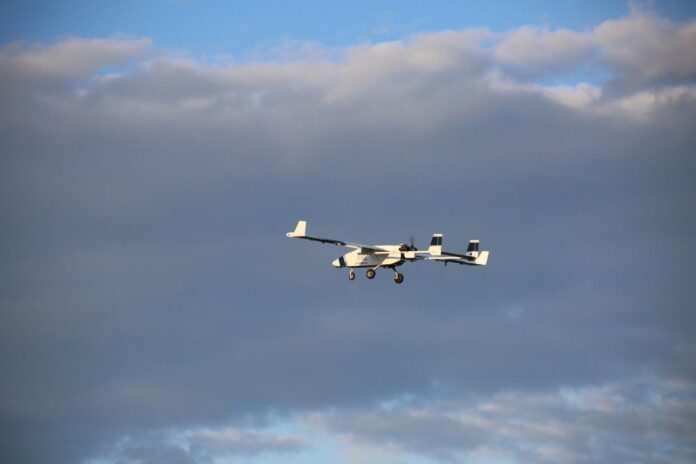Virginia Tech’s flight expertise is helping clear up aviation communication.
A recent multi-partner collaboration between industry and government identities evaluated the effects of latency on air traffic communications, particularly when an air traffic controller is managing fewer aircraft, also known as low-density conditions. The Virginia Tech Mid-Atlantic Aviation Partnership (MAAP) played a key role in the project by securing airspace approvals, providing safety oversight, and coordinating with air traffic control during the live flights at one of two test locations.
The project, Low-Density UAS Communications Evaluation, is part of the Federal Aviation Administration’s (FAA) NextGen, which is an initiative to modernize the U.S. airspace system. This includes developing new air traffic technologies and procedures as well as safety and security enhancements. To that end, ensuring robust communication protocols between drone pilots and air traffic controllers is critical and was the primary focus of this work.
Operationally led by Texas A&M University Corpus Christi’s Lone Star UAS [Unmanned Aerial Systems] Center of Excellence and Innovation, the research included two test locations – Accomack County Airport in Accomack County, Virginia, and the center’s primary operations location in Port Mansfield, Texas. MAAP facilitated the former location, which offered access to the ocean.
“Our project sponsor wished to conduct the evaluation at two geographic areas: the Atlantic Ocean and the Gulf of Mexico. Because we have a great partnership with MAAP, we recommended that Virginia Tech be added as a second UAS test site,” said Michael Sanders, executive director of the center. “I trust MAAP’s operational and safety expertise and wanted them on the team.”
MAAP has a long track record of providing safety oversight to federally sponsored projects.
“MAAP’s prior experiences and expertise in thorough safety case development and safety management allowed for this research to take place successfully in our national airspace, contributing to a significant FAA initiative,” said Leah Sanders, chief of flight operations for MAAP. “As a UAS test site, we’re communicating with the team to evaluate risks and mitigate them appropriately at every project milestone, and we’re trusted to coordinate complex chase aircraft operations and interface with air traffic control. Especially with this project, flights were occurring several miles offshore with a large UAS, so safety oversight was crucial.”
With oversight from FAA’s NextGen Office, the project explored potential requirements and operational implications for aircraft communications while flying beyond visual line of sight in low-density conditions. It included a variety of partners, such as
- Florida Test Bed at Embry-Riddle Aeronautical University
- Navmar Applied Science Corporation
- AVISION
- LS Technologies
- William J Hughes Technical Center for Advanced Aviation
- Microtheory
The first live flight demonstration was conducted at Accomack County Airport with range safety facilitated by MAAP.
During the Virginia portion of the project, the Navmar Applied Science Corporation’s Tigershark XP, an approximately 500-pound drone with thousands of flight hours, was used and a chase plane and crew was provided by UAV Pro, an unmanned aerial vehicle integration company based in Blackstone, Virginia, to ensure safety.
The second live flight demonstration was conducted at the Lone Star UAS Center of Excellence and Innovation, using the Commaris Seeker, a drone used to perform various commercial inspection operations in applications such as a powerline, mapping, agriculture, and security.
The project completed its data analysis phase in August.

